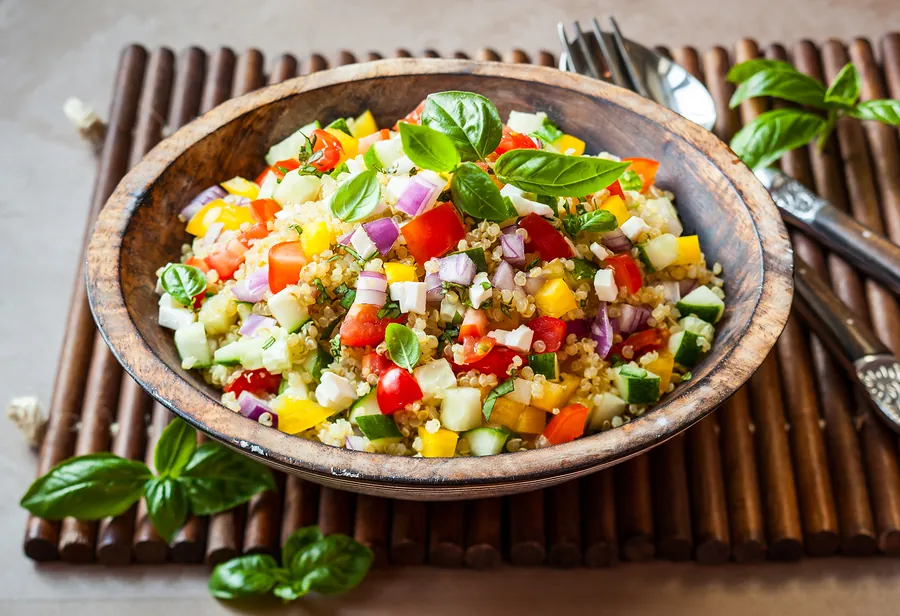Quinoa, the Noteworthy Superfood
Over the last decade quinoa (keen wah) and other “ancient grains” have grown in popularity. Quinoa has become praised as a superfood across the United States and Europe. This comes as no surprise, really, as quinoa is packed full of nutritional benefits.
History
Quinoas roots are firmly planted in South America, primarily in Argentina, Bolivia, Chile, Colombia, Ecuador, and Peru. Quinoa, along with maize, was one of the two core foods of the Inca Empire. The fact that quinoa was a food that could survive a variety of growing conditions along with its nutrient strength made it a staple amongst the Incas for hundreds of years.
Around 1532 quinoa came close to disappearing, according to the Whole Grains Council. This was during the Spanish invasion of South America. Colonists spurned quinoa as “foods for the Indians.” The conquistadors forbade the growth and harvest of quinoa for a time and forced the Incas to grow wheat instead. Small pockets of wild quinoa survived the conquistador’s annihilation in higher altitudes. The plant was largely forgotten until the 1970’s when it was “rediscovered” by the outside world.
Production
Much of the quinoa consumed today still comes from South America. According to WHFoods, Peru is the largest commercial producer of quinoa. In 2010, Peru harvested nearly 41,079 metric tons of the crop. Bolivia is the second largest producer of quinoa, having harvested 29,500 metric tons in 2010. These two countries produced nearly 99% of all commercially grown quinoa in 2010.
WHFoods states that there is some commercial quinoa production in the United States, however, production remains under 10,000 pounds. California, Washington, Oregon, and the Colorado Rockies have seen some quinoa production. The biggest barrier to U.S. production is climate, according to the Agricultural Marketing Resource Center (AGMRC). Quinoa needs to be grown in cool, mountainous regions, because air temperatures above 90-95 degrees can cause sterility of the pollen.
There are over 120 varieties of quinoa. White, red, and black quinoa are the most commonly cultivated forms.
Health Benefits and Nutritional Information
Botanically speaking, quinoa is not a grain, and what we are eating is the seed of the plant. Quinoa is actually related to beets, spinach and chard. You can even eat the leaves of the quinoa plant. From a culinary standpoint, quinoa is what is called a “pseudo-cereal.” Pseudo-cereal is a name given to foods that are eaten and cooked like grains and have similar nutrient profiles. Quinoa is included in the grains food group.
- Quinoa is gluten-free which makes it a great substitute for more common grains like wheat and other grains in the grass family.
- It is beneficial to people trying to lose weight as it helps you to stay fuller longer.
- Quinoa is a complete protein. The protein content per 100 calories is higher than barley, brown rice, millet, and potatoes, but less than oats and wild rice.
- Of all of the whole grains, quinoa contains the most potassium. Potassium is known to help control blood pressure.
- It contains essential amino acids like lysine and adequate amounts of calcium, iron, and phosphorus.
- Tests are showing that quinoa contains anti-inflammatory phytonutrients.
- A ¾ cup of cooked quinoa contains 59% of the DV of manganese recommended, 40% of phosphorus, 21% of fiber, and 19% of the recommended folate (an essential nutrient for expecting women).
- Antioxidant flavonoids quercetin and kaempferol are found in abundance in quinoa. Sometimes the concentration of these two flavonoids can be greater in quinoa than in high-flavonoid berries like lingonberry or cranberry.
Cooking Tips
- To help eliminate the bitter taste that sometimes accompanies quinoa you should soak or rinse before cooking. Place the quinoa in a mesh strainer and run cold water over the seeds while gently rubbing the seeds together in your hands. This process should only take a few minutes.
- Cook quinoa with one part grain, two parts liquid. (One cup quinoa, two cups water, for example.) The liquid can be water, or to get different flavors, you could use broth. Vegetable, beef, and chicken broth all taste excellent cooked into quinoa.
- Add spices of your choice.
- Bring mixture to a boil then simmer for around 15 minutes.
- Fluff then serve.
- For a nuttier flavor dry roast the quinoa before following the above steps. To dry roast, place it in a skillet over medium-low heat and stir constantly for about 5 minutes.
Fun Facts
- Quinoa is being considered as a possible crop in NASA‘s Controlled Ecological Life Support System for long-duration human occupied space flights.
- To keep them going on long marches and in battles, Inca warriors ate balls of quinoa and fat.
- Chicha is a traditional beer sometimes made from fermented quinoa.
- 2013 was the International Year of Quinoa.
Currently our page does not have a recipe featuring quinoa, but we have included a recipe to try.
Quinoa and Roasted Pepper Chili
- 2 red bell peppers
- 2 poblano chiles
- 4 teaspoons olive oil
- 3 cups chopped zucchini
- 1 ½ cups chopped onion
- 4 garlic cloves, minced
- 1 tablespoon chili powder
- 1 teaspoon ground cumin
- ½ teaspoon Spanish smoked paprika
- ½ cup water
- 1/3 cup uncooked quinoa, rinsed
- ¼ teaspoon kosher salt
- 1 (14.5-ounce) can fire-roasted diced tomatoes with chipotles, undrained
- 1 (15-ounce) can no-salt-added pinto beans, rinsed and drained
- 1 cup low-sodium vegetable juice
Directions
Preheat broiler. Cut bell peppers and chiles in half lengthwise; discard seeds and membranes. Place halves, skin sides up, on a foil-lined baking sheet, and flatten with hand. Broil 10 minutes or until blackened. Place in a paper bag; fold to close tightly. Let stand 10 minutes. Peel and coarsely chop. Heat a large Dutch oven over medium-high heat. Add oil to pan; swirl to coat. Add zucchini, onion, and garlic; sauté 4 minutes. Stir in chili powder, cumin, and paprika; sauté for 30 seconds. Add roasted peppers and chiles, 1/2 cup water, and remaining ingredients; bring to a boil. Reduce heat to medium-low; cover and simmer for 20 minutes or until quinoa is tender.
The Edible Desert
The Sonoran Desert may appear to be barren to the unacquainted eye, but surprisingly it has around 540 edible plants. Native Arizonan cultures have been harvesting these plants for food and nourishment for hundreds of years. It truly is an edible desert.
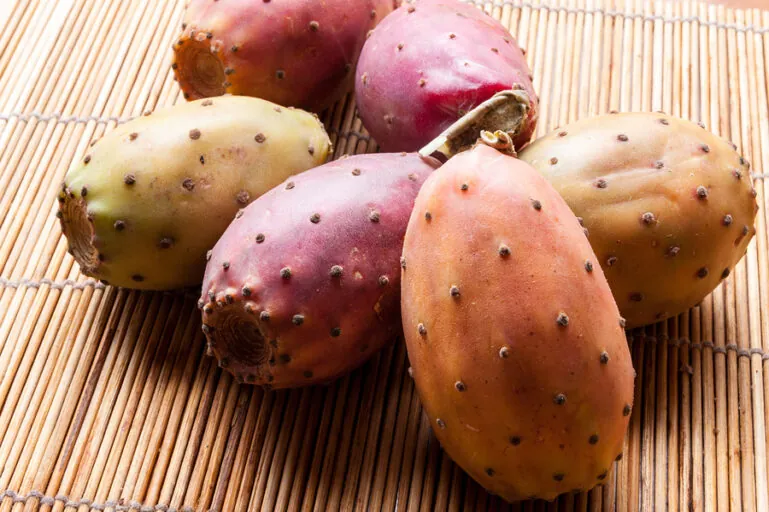
The safest way to learn to identify and experience eating desert plants is with a trained guide. The Boyce Thompson Arboretum and several of the local Jeep and Hummer tours have guides that are very knowledgeable in the edible plants of the Sonoran Desert.
Here is a list of just some of the native desert plants that are safe for you to eat.
- Jumping Cholla The jumping cholla is a tree-like plant with a low-branching trunk that has limp branches of chained fruit. It is covered in tiny spines that attach very easily to a person. The cholla buds and fruit are edible, however this is a cactus that will really make you work for the food.
The fruit of the jumping cholla is edible year round, the larger fruits are better tasting. The inside is edible raw, or the whole thing if it is boiled first.
Cholla buds are in bloom in April and sometimes part of May. They are low in calories, but high in iron and calcium. They also contain complex carbohydrates.
- Saguaro Cactus Fruit The Tohono O’odham people once relied heavily on the ruby red fruit of the saguaro cactus. The fruits are 6–9 cm long and ripen in June. Each fruit contains around 2000 seeds and fleshy connective tissue (pulp).
The fruit has a sweet mild taste, almost like strawberries, and the small black seeds of the fruit give it a nutty flavor. It can be made into jam, syrup and even wine. The Tohono O’odham tribes celebrate the beginning of their summer growing season with a ceremony using a fermented drink made from the fruit to summon rains that are vital for their crops.
Saguaro cactus fruit contains vitamin C, vitamin B12, and dietary fiber. It is also has hydrating properties.
- Creosote Bush This is a brown bush that has green stems and darker green leaves with yellow flowers. The flowers look a little like daffodils. Chewing or sucking on the twigs will help to relieve thirst. Steeped leaves are used as a tea. When used as a tea, the leaves and small twigs must be gathered, washed, and dried in the sun.
- Agave There are four parts of the agave that are edible: the flowers, sap, leaves, and the stalks or basal rosette. It can be eaten in a variety of ways.
The stalks are ready in the summer, before the plant blossoms. Roasted stalks are rather sweet. Some farmers markets have roasted agave stalk for sale.
The agave leaves are harvested in the winter and spring when their sap content is the highest. They are cut into large chunks and baked or roasted. Roasted agave leaves have a rich caramel flavor but are highly fibrous, so the leaves are chewed and the left-over fibers are thrown out.
In order to harvest the sap an agave should be at least six to eight years old. The harvested sap, or agua miel (honey water), is sweet with a mild bitterness. The sap can be eaten fresh or it can be boiled down to make a syrup. Agave syrup (sometimes called agave nectar) is often used as an alternative to sugar in cooking. If the sap sits longer than a few hours it starts to ferment. Fermented sap can be made into vinegar or even pulque, an alcoholic beverage. (Tequila and mescal are two more popular alcoholic beverages that are made from the agave plant.)
The agave flowers in the summer. The flowers and the buds can both be eaten, but need to me steamed or boiled first. Once the flowers are boiled they can be added to scrambled eggs or soups, or even battered and fried and eaten on their own. Remove the pollen tips before cooking to avoid a bitter flavor. Agave flowers (flor de agave) can be found in Mexican produce markets and farmers markets as well.
- The prickly pear cactus is probably one of the better known edible desert plants. After you remove the thorns, the prickly pear cactus pads (or leaves) can be eaten raw or cooked. They make an excellent addition to your salad after you boil and chop them.
The fruit of the prickly pear is often found in Arizona gift shops being sold as jam or candies. The prickly pear fruit (called a Tuna) can be eaten both cooked and raw, and also makes an excellent juice. There is evidence that the juice of the fruit of prickly pears lowers blood cholesterol.
Raw prickly pear contains 17% of the daily recommended vitamin C for adults, and 24% of the daily recommended magnesium. They also contain potassium, folate, vitamin B6, and calcium amongst other nutrients.
Do not eat a prickly pear cactus with orange-crossed thorns or unripe fruits as they are poisonous. The fruits are ripe when they are bright red. In addition to eating, the pads can be used for treating sunburns. Just cut the pad and press the moist insides to the affected skin.
Who would have thought that a place that seems so harsh could provide such sustenance? Remember to always check and double-check the identity of the plant before eating it. You should be very cautious when eating plants found in the wild if you aren’t sure what you are doing.
Cotton is still King in Arizona
America’s favorite fiber is cotton. Arizona cotton farmers are credited with growing the highest quality grade of cotton around. And, despite much fewer acres planted in cotton, this crop remains our largest agriculture export commodity in the state bringing more than $500 million into Arizona.
National Eat Beans Day: Fascinating Bean Facts
Beans, beans the magical fruit, the more you eat the more you… well… you know.
July 3rd is National Eat Beans Day. This is a day to celebrate the bean vegetable in all its forms.
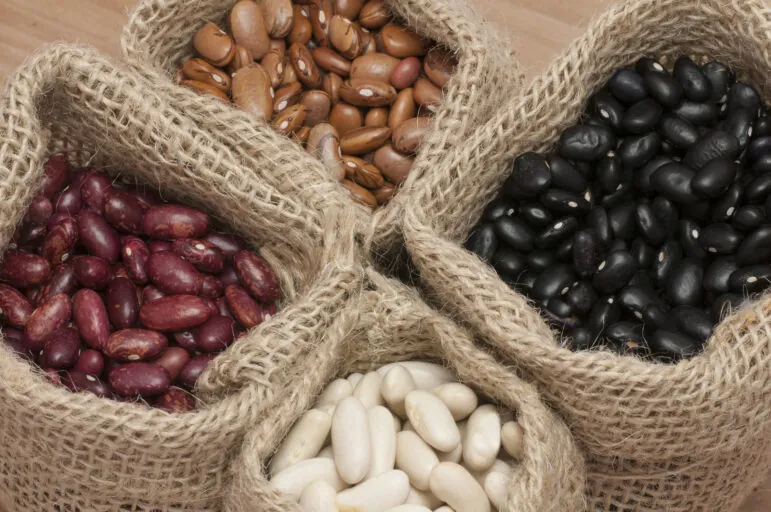
Were you aware that beans are virtually free of fat, high in protein, and contain more fiber than whole grain foods? According to the American Heart Association eating beans as part of a heart healthy diet and lifestyle may help improve your blood cholesterol, a leading cause of heart disease. Adding beans to your diet may also help keep you feeling full longer which can help you with weight management. It is recommended by the USDA that adults eat at least three cups of beans every week to obtain their maximum health benefits. That is three times more than Americans current average consumption.
In honor of the extremely healthy and beneficial bean vegetables on their special day, have a look at these fascinating bean facts.
- Apart from the above mentioned health benefits, beans also contain calcium, iron, folic acid and potassium.
- There are around 40,000 bean varieties in the world. Only a small portion of these are mass-produced for regular consumption.
- North Dakota, Michigan, and Nebraska are the top bean growers in the US.
- Ancient Egyptians grew beans. According to “Food in the Ancient World” by Joan Pilsbury Alcock, fava beans, chickpeas, and lentils were found in Egyptian tombs dating back at least 4,000 years.
- Bean genetics have remained stable over the years. Beans from thousands of years ago are genetically very close to the beans we eat today.
- Some of the more popular beans are lima, kidney, pinto, garbanzo (chickpeas), black, lentil, and great-northern.
- The oligosaccharides (complex carbs) in beans can cause flatulence when not eaten regularly. (Hence the children’s rhyme.) Eating beans at least once or twice a week may help reduce this affect.
- Use a hot-soak method to soften dry beans and drain before cooking to reduce the oligosaccharides and stop flatulence.
- The beans (legumes) that cause the least amount of flatulence are adzuki beans, black-eyed peas, lentils, mung beans, and split peas.
- Dry beans are better for you than canned because they contain less sodium. If you eat canned, rinse them well to drop the sodium levels.
- You can freeze cooked beans for up to six months. Before reheating thaw them in the refrigerator overnight.
- Nearly six to 11 percent of a cooked beans weight is protein.
Cook up your favorite bean recipe for dinner tonight in celebration of Eat Beans Day! If you don’t have a bean recipe on hand, check out these recipes on Fill Your Plate. For beans grown locally, click on find a farm product and type in beans.
Related articles
- 12 Little Known Facts About Beef (fillyourplate.org)
- Time For Some Tomato Talk (fillyourplate.org)
- Baked Beans – An American Original (fillyourplate.org)
Best Foods for Expecting Mothers
Congratulations, you are pregnant! The food choices you make every day you are pregnant can affect your heath and the health of your baby.

It comes as no surprise that the best foods for expecting women are great foods for everyone. However, when you are pregnant, there are particular foods and nutrients that you need to grow the healthiest baby you can while also staying healthy yourself.
Weight Gain
You will need to eat slightly more when you are expecting, however the idea of eating for two is a misconception. It is more about the quality of food than the quantity. If you are entering into your pregnancy at a healthy weight, you really only need around an extra 300 calories a day. If you are carrying multiples or are underweight your additional caloric intake may be higher. Someone who is overweight may require slightly less. According to the American Pregnancy Association, unless you are expecting multiples or entered into pregnancy overweight, the ideal weight gain during pregnancy would be between 25-35 pounds.
Try to not stress too much about your weight gain, just try and avoid gaining too much and eating unhealthy foods. Be selective about your food choices; choose foods that contain vitamins, minerals, and protein. Pregnancies are not cookie-cutter conditions, your health care provider will help to monitor your weight to make sure you are gaining at the levels healthiest for you. It is important to be open with your doctor and approach them with any diet and weight gain concerns that you may have.
Foods You Should Eat
The USDA states that vitamin and mineral supplements cannot replace a healthy diet. Most doctors recommend that pregnant women take a prenatal vitamin and mineral supplement every day in addition to eating a healthy diet. It is important to choose foods that have the vitamins and minerals that are essential to the needs of your developing baby and your personal health.
You should also avoid food choices that are high in “empty calories.” Empty calories are the calories from solid fats and added sugars in things like fried foods, cheese, whole milk, fatty meats, desserts and soft drinks. Food selections that are fat-free, unsweetened, low-fat or contain no added sugars have fewer or no “empty calories.”
This is a list of foods that are most beneficial to you and your growing baby.
- Proteins The amino acids in proteins are the building blocks of the cells in your body, but proteins have other benefits beyond that. They can keep your hunger at bay, which is a good way to avoid junk food. Proteins also help to keep your blood sugar stable.
The USDA recommends the following protein rich foods: Beans and peas (pinto beans, edamame, soybeans, lentils, chickpeas, white and kidney beans), Nuts and seeds (sunflower seeds, hazelnuts, almonds, peanuts, peanut butter, pine nuts), Lean meats (beef, lamb, pork), and certain seafood (salmon, trout, sardines, herring, and pollock). Quinoa, eggs, and low-fat dairy products are also good sources of protein.
In addition to protein, beans and peas contain iron, fiber and potassium. Heme-iron is the most readily absorbed type of iron and it is found in the lean meats along with protein. Seafood has omega-3 fatty acids, and nuts and seeds contain vitamin E.
- Calcium Your baby needs it for his growing bones, and you need it to help keep yours strong. This essential mineral also helps with the functioning of your nerves and muscles. Dairy foods are your best source of calcium. Vitamin D boosts absorption, so look for dairy products that are vitamin D fortified to get the most calcium out of each serving.
Some of the best dairy choices include: Fat-free milk (skim milk), low-fat milk (1% milk), low-fat or fat-free yogurt, calcium-fortified soymilk, and pasteurized cheeses. Spinach and calcium-fortified orange juice are also good ways to take in calcium.
- Omega-3-rich foods Pregnancy safe fish (salmon, herring, pollock) are an excellent source of omega-3 fatty acids as well as protein. If you don’t like to eat any kind of fish, flaxseed is another source of the essential omega-3 fatty acids. Specifically, a type called. DHA. These healthy fats help you metabolize fat-soluble vitamins like A and E and are crucial to the development of the baby’s brain and eyes. (The brain and retina are primarily composed of DHA.) Drizzle some flaxseed oil over your salads or add some ground seeds to your yogurt, soup, or cereal. Making smoothies and adding in some flaxseed is another option.
Avocados and walnuts are also excellent sources of omega-3s. Remember that even though omega-3s are healthy fats, they are still fats. Which means higher in calories, so try and consumption of foods rich in omega-3s to around 30% of your daily calories.
- Iron A woman’s blood volume increases as much as 50% when she is pregnant. Iron is an important component in red blood cells so not only does your baby need it for his supply, but you need it for yours. Eating foods with iron will help to prevent anemia in pregnancy. Iron also helps to build the baby’s brain by strengthening nerve connections.
Lean meats, such as beef, are high in iron. Dark leafy greens, quinoa, lentils, dried fruit, tofu, and cooked dried beans are also excellent sources of iron. Foods high in vitamin C help your body absorb more iron. So you should eat your iron rich foods along with vitamin C rich foods like citrus, red bell peppers, strawberries, kiwis, and tomatoes.
- Folic Acid Folic acids are powerful in preventing neural-tube defects like spina bifida in developing babies. Doctors recommend increasing your folic acid intake before you try and conceive because its benefits are so essential early on.
Lentils, dark leafy greens, great northern beans, and asparagus are high in folic acid. Most pasta, cereal, rice, and bread products are now fortified with folic acid as well.
- Colorful Produce You can eat any kind red, orange, yellow green or blue fruits and veggies as you desire. (Smoothies and juices qualify!) Colorful produce are packed with beneficial phytochemicals and antioxidants.
Beta-carotene is one such benefit found in many fruits and vegetables. Your body converts beta-carotene into vitamin A. Vitamin A is extremely important in the development of your baby’s skin, bones, organs, and eyes. It is better to take in vitamin A in natural forms and your prenatal vitamins only. High levels of “preformed” vitamin A can increase the risk of birth defects.
- Complex Carbs Whole grains contain complex carbs and are full of fiber (which is a life saver if you are dealing with constipation). The starchiness of whole grains will also help subdue nausea. Eating a variety of whole grains will also up your daily dose of baby-building minerals and vitamins, like the B vitamins, iron and more.
Good whole grain choices include popcorn, quinoa, oats, wheat, rice, barley, and corn.
- Water Dehydration can up your chances for early labor. Making sure you are well hydrated will help your body to flush toxins, and deliver nutrients throughout your body. Drinking enough water, at least 8 cups a day, will also make you feel more full so you are less likely to reach for that extra handful of chips or cookies.
If drinking two quarts of plain old water a day sounds boring, there is good news. The water you get from all sources (100% juice, soup, milk, tea, and decaffeinated coffee) counts. Don’t set your focus on just water, but overall fluid intake.
Remember that when you are pregnant you should not drink alcohol (including beer, wine, liquor, mixed drinks, malt beverages, etc.). Even moderate drinking during pregnancy can cause behavioral or developmental problems for your baby. Heavy drinking during pregnancy can result in serious problems for your baby, including malformation and mental retardation.
Of course if you have any concerns you should talk with your medical care provider. This is only intended as a quick reference and should not be used in place of information provided to you by your doctor. We wish you a safe and healthy pregnancy!!
Resources
http://www.who.int/topics/breastfeeding/en/
http://www.who.int/topics/pregnancy/en/
http://www.whattoexpect.com/first-year/photo-gallery/best-foods-for-pregnant-women.aspx#03
http://americanpregnancy.org/pregnancy-health/eating-for-two/
http://americanpregnancy.org/pregnancy-health/foods-to-avoid-during-pregnancy/
National Fruit and Vegetable Month
June is National Fruit and Vegetable Month.
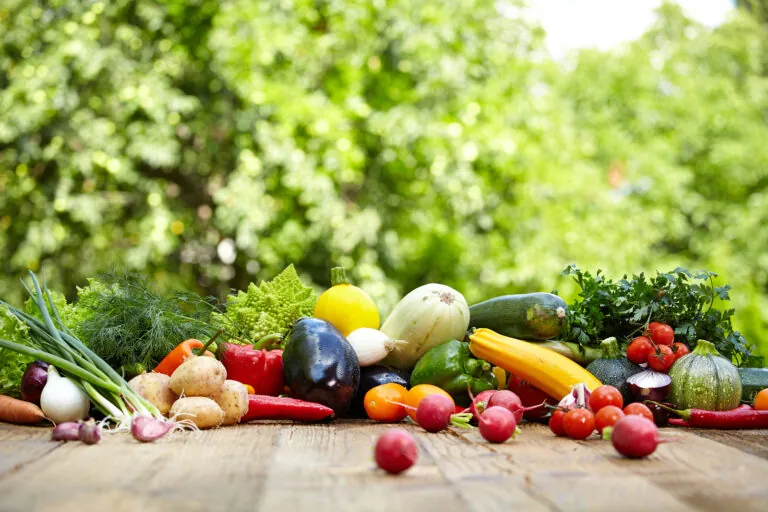
The Dietary Guidelines for Americans set by the USDA recommends we eat more fruits and vegetables than any other food group. In fact, they say that half of your plate at every meal should be a fruit and/or vegetable. Every step that you take towards eating more fruits and veggies will help you make sure that your body is performing at optimum levels. What better opportunity than National Fruit and Vegetable Month to add more healthy fruits and vegetables into your diet?
Nutritional Facts
The USDA states that people who eat more fruits and vegetables as part of an overall healthy diet are likely to have a reduced risk of some chronic illnesses.
- Fruits offer nutrients that are vital to maintaining your health. Many fruits contain dietary fiber, folate (also known as folic acid), potassium, and vitamin C. No fruits have cholesterol and the majority of fruits are naturally low in calories, fat, and sodium.
- Vegetables are also full of nutrients that are important to your health. Common nutrients found in vegetables are dietary fiber, folate, potassium, vitamin A and vitamin C. Most vegetables are low in calories and fat and contain no cholesterol.
- Both fruits and vegetables are known for their dietary fiber. Diets that consist of foods rich in dietary fiber can reduce your risk of obesity, type 2 diabetes, and heart disease.
- Fruits and vegetables rich in potassium could lower blood pressure, increase bone strength and mass, and reduce the risk of getting kidney stones.
- Fruits and vegetables come in many colors, and each color offers its own nutritional focus. This is called “eating the rainbow.”
- Green fruits and vegetables contain luteins which can protect your eyes from cataracts.
- Beta-carotene is prominent in orange vegetables and help boost the immune system.
- Red fruits and vegetables have larger quantities of anthocyanins and lycopene. These help to keep your heart healthy and reduce the risk of some cancers.
- Purple and blue fruits and vegetables are rich with antioxidants that improve memory function and protect you from cell damage.
- White fruits and vegetables are shown to lower blood pressure and cholesterol levels.
Tips for Fruit and Vegetable Storage and Preparation
The biggest thing to remember when storing fruit and vegetables is to practice the rule FIFO. FIFO means “first in, first out” and is used by grocery stores everywhere- so why not practice it at home? This rule mostly applies to canned and frozen goods as fresh fruits and veggies are typically utilized right away. When you store your fruits and veggies in the pantry or freezer rotate newly bought food to the back and the older ones to the front so that they are used first. This will help prevent the food from going bad and reduce waste.
When it comes to your fresh fruits and vegetables it is important to wash them properly before you eat them. Washing well helps to remove any traces of pesticides or dirt and the wax coating that may have been added to them to keep them looking nice in the store. Use clean, cool running tap water to wash your produce. For porous fruits and veggies you may want to use a “nail brush” to scrub them and get all of the dirt out of the nooks and crannies. You don’t need to use specialized produce scrub, clean water works fine. You should never use soap as there is a possibility that you won’t be able to remove all of it- and eating soap could possibly make people ill.
Ways to Eat More Fruits and Vegetables
Fruit and veggies consumed in almost all forms count towards your daily total. They can be frozen, canned, dried, fresh, or 100% juice. According to Fruits & Veggies: More Matters, canned and frozen foods are processed within hours of their harvest so that their nutritional value and flavor are preserved. Including more fruits and vegetables can be fun. They are available in almost and infinite variety so there is always something new to try. They are also a natural, quick and convenient snack! Check out these surefire ways to make sure you are adding more fruits and vegetables to your diet every day.
- Keep in mind that fruits and veggies in all forms matter. So grab some fruit and vegetables throughout the grocery store. Buy some canned and frozen. Buy a bag of dried bananas or cranberries, or whatever your favorite fruit is and make it into a trail mix (or enjoy as is). And, of course, grab a jug of your favorite 100% fruit or veggie juice.
- Add a can of vegetables to your canned soup or add some mushrooms, peppers, and/or onion to a jar of spaghetti sauce for a quick meal with extra nutrition. To go even further with the spaghetti, use spaghetti squash instead of noodles.
- When you make lasagna add pureed veggies to the sauce. Another option would be to add vegetables like sliced peppers, shredded carrots or chopped spinach between the layers.
- When you are out to eat most restaurants offer sandwich/soup/salad options. Order extra veggies on your sandwich (avocados or cucumbers are great choices) or try a vegetable soup. Another option would be to choose a fruit or veggie salad, but remember to order dressing on the side to control the amount of calories you will be eating.
- Order entrées with a lot of vegetables like fajitas or stir fry.
- For a quick and healthy snack that is great on the go, spread some peanut butter on a tortilla and add your favorite fruits, fresh or dried, roll it up and enjoy.
- Add fresh fruit to your yogurt.
- Bananas, apples, and plums are the natural fast food. A healthy, mess-free choice for a snack or meal on the go.
- Look up your favorite fruits and vegetables under the Fill Your Plate recipes section for some more inspiration.
Fill Your Plate offers a lot of information about various fruits and vegetables here on our blog. For more detailed information about certain produce items such as watermelons or carrots, for example, you can look them up in our older posts. One thing is certain, fruits and vegetables are an extremely valuable part of our diets, and you can only benefit from adding more to your everyday diet.
Related articles
- Beat the Heat: Easy Oven and Stove Free Dinners (fillyourplate.org)
- Ask a Farmer: Starting a Family Garden (fillyourplate.org)
- Juicy-Sweet, Watermelon Is The Perfect Summertime Treat (fillyourplate.org)
Juicy-Sweet, Watermelon Is The Perfect Summertime Treat
It is summer and that means lots of barbecues, grills, and campouts. A popular food at all of these is the watermelon. When you next enjoy this juicy-sweet summertime treat, keep some of these interesting facts in mind.

Watermelon is believed to originally come from the Kalahari Desert in Africa. The first documented watermelon harvest was in ancient Egypt around 5,000 years ago. It is shown in hieroglyphics on the walls of ancient Egyptian buildings. Watermelon seeds were even found in the tomb of the Pharaoh Tutankhamun. As advancements in travel abilities progressed, watermelons began to spread along the Mediterranean Sea via merchant ships. Watermelon reached China, which is the largest producer of watermelons today, by the 10th century. By the 13th century it began to spread through Europe by way of the Moors. John Egerton, a Southern food historian, believes it was African slaves who introduced watermelon to the United States.
Today Arizona produces around 5.9% of the U.S. watermelons. Arizona is the 5th highest U.S. producer of watermelons, coming in behind Georgia, Florida, Texas, and California. Watermelons are grown in Maricopa, Yuma, La Paz, Cochise and Pinal Counties. Maricopa, Yuma, and Pinal, typically account for the majority of the crop grown. Watermelon are usually planted in January in Arizona and as watermelon takes around 90 days to grow from seed to harvest, they typically begin to be ready by May. Our watermelon is at its peak in June and July, but is usually available until November. The majority of Arizona’s watermelon is sold domestically.
Watermelon is perhaps the most refreshing fruit of all. It is 92% water, so consuming it in the hot summer months is a great way to make sure you are staying hydrated. Apart from being the perfect thirst quencher, watermelon hosts a variety of health benefits. In fact, fresh watermelon has earned the American Heart Association’s “Heart-Check Mark” for being a heart healthy food. Here is a closer look at some of the benefits to including watermelon in your diet:
- If you are trying to control your weight, watermelon is the perfect food to include in your diet. One cup of watermelon has around 40 calories and has the most nutrition per calorie of common foods.
- Watermelon contains dietary fiber which promotes digestive health.
- It contains an antioxidant carotenoid called lycopene. According to org and the Western Watermelon Association , studies have shown that lycopene has a potential role in reducing risk various cancers (such as breast, prostate, and endometrial cancers) and heart disease. It can also provide protection to skin from harmful UV rays. Watermelon contains higher levels of lycopene than any other fruit or vegetable.
- Both vitamins B6 (pyridoxine) and B1 (thiamin) are found in watermelon, which aid in metabolism and nervous system function.
- Watermelon seeds are an excellent source of magnesium. Magnesium is required for maintaining a healthy heart rhythm and building strong bones. It is also important in keeping a healthy immune system and maintaining normal nerve and muscle function.
- Citrulline is and amino acid that is found in watermelon. Our bodies turn it into another amino acid called arginine. Arginine aids in cell division and the healing of wounds. It also aids in blood flow which supports cardiovascular function.
- Potassium is also found in watermelon. Potassium helps maintain a healthy blood pressure.
- Watermelon also has vitamins A and C, so it is an optimal food for maintaining healthy vision and boosting the immune system. Two cups of watermelon contains 25% of your recommended daily vitamin A and 30% of your vitamin C.
It is apparent that enjoying this succulent food as a part of your diet has many health benefits, but how do you choose the right one? We found these tips from the Old Farmer’s Almanac:
- If you thump it and it sounds hollow, that typically means it is ripe.
- Look at the bottom of the watermelon. A ripe watermelon will have a cream or yellow colored bottom. The bottom will be white if not ripe.
- Look at the color on top of the watermelon. If it is ripe there is little contrast between the stripes.
- It should be symmetrical and firm. You want it to be free of cuts, dents and bruises.
After you get your watermelon home, a whole uncut watermelon will typically last 7-10 days on the counter. When refrigerated it can possibly last 2-3 weeks. When cut watermelon can last in the fridge for around 3-5 days. Your cut watermelon should be stored in an airtight container. Unfortunately watermelons don’t freeze well. The flesh becomes a dark red and when cut open the juices will flow out leaving you with an empty rind.
Watermelon is a versatile food. It is most commonly eaten raw cubed, sliced or balled, but it can also be enjoyed cooked and added to a variety of dishes. You can actually eat the entire watermelon! The seeds and rinds are both edible and offer their own nutritional benefits. In China the rind is often used in stews and stir-fries and it is also eaten pickled. Pickled rind is also popular in Russia and parts of southern U.S.
Give one of our favorite recipes a try.
- 1 5-pound Watermelon
- 1/2 Red Onion
- 1/4 Cup Red Wine Vinegar
- 1/2 Cup Olive Oil
- 8 Ounce Crumbled Cheese, Blue or Feta
Directions
Alternatives: Substitute 1/4 cup of lime juice and 1/4 cup of lemon juice for red wine vinegar. Add 1/4 cup basil. Cube mozzarella cheese as replacement for the Feta or Blue cheese. Use pine nuts for extra texture. Cut watermelon from rind into bit-sized pieces. Thinly slice the red onion. Mix Red wine vinegar and olive oil together and mix in with the watermelon cubes and cheese. Salt and pepper to taste.
Watermelon is a healthy food craved by kids, teens, and adults alike, and it is easy to see why it is a star of the produce department. Head to your local grocery or farmers market and purchase some of this sweet treat to enjoy today!
Related articles
- Beat the Heat: Easy Oven and Stove Free Dinners (fillyourplate.org)
- Ask a Farmer: Starting a Family Garden (fillyourplate.org)
- Wacky for Watermelon (fillyourplate.org)
Time For Some Tomato Talk
It’s May, and that means that tomatoes are in season!
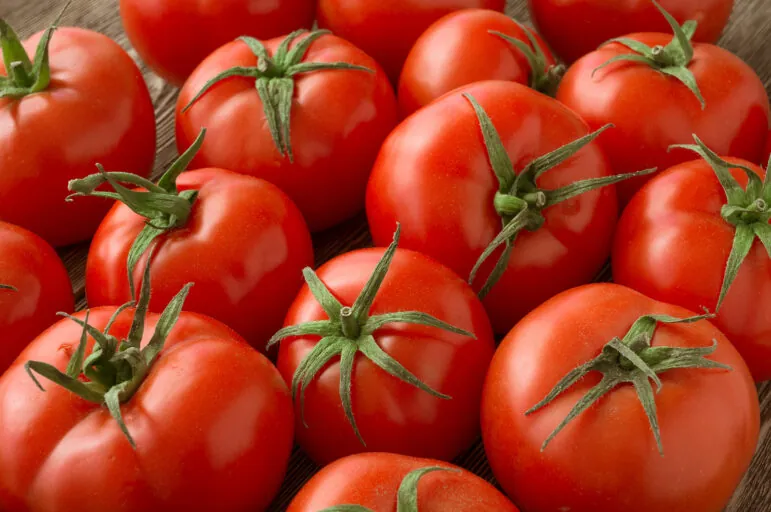
To help you to get into the tomato gobbling mood, here are some health benefits, interesting facts, storage tips and mouth-watering recipes that will tempt even the most committed anti-tomato palettes.
Health Benefits
- Tomatoes contain lycopene, an antioxidant that aids in protecting against cancer, cardiovascular disease, and cell damage.
- A 3.5 oz. red tomato only contains about 18 calories but it also provides dietary fiber, potassium, protein, and vitamins A, C, and E.
Little Known Facts
- Though closely linked to Italian cuisine, tomatoes are actually native to the western side of South America, coming from countries such as Chile, Columbia, Ecuador, and Peru.
- Tomatoes are thought to be first cultivated in Southern Mexico by the Aztecs. The exact date of domestication is unknown.
- In the 1500’s Spanish explorers brought tomato seeds from Mexico back to Spain thus introducing them to the European populations.
- Botanically speaking, tomatoes are a fruit as they have seeds and grow from a flowering plant.
- For cooking purposes and per the 1887 U.S. tariff laws, tomatoes are classified as vegetables.
- They are a member of the nightshade family. Because of this classification, it took some time for the tomatoes popularity to grow as many people feared they were poisonous. This isn’t really a far-fetched idea, because even though the fruit itself is safe to eat, eating the stems, leaves, and vines could be harmful.
- China is the world’s largest producer of tomatoes, providing more than a quarter of the tomatoes grown worldwide. The United States and India come in second and third.
- There are over 7,000 varieties of tomato, the most popular are beefsteak, cherry, plum, and grape.
- If you place a ripe banana next to a green tomato, the tomato will ripen due to the ethylene gas produced by the banana.
- Pretty much all tomato varieties are red, however there are also other colors, including black, green, orange, pink, purple, and yellow.
Selection and Storage
- Choose tomatoes that are rich in color, and well-shaped with smooth skin and no wrinkles or cracks.
- There should be no bruising or soft spots.
- Choose the ones that do not have a puffy appearance as that indicates they may have inferior flavor.
- A ripe tomato will have a slight pressure to the touch and have a distinctly sweet fragrance.
- Tomatoes are susceptible to cold so they should be stored at room temperature and out of direct sunlight.
- Depending on how ripe they are when purchased, tomatoes will keep for up to a week.
- If you notice your tomatoes becoming overripe before you are ready to eat them, you can them place them in the refrigerator where they will keep for maybe one or two more days.
- Wash tomatoes under cool, running water and pat dry before serving.
How to Enjoy
Many people have a love/hate relationship with tomatoes. Some people love them and some people hate them, but even those who hate them often enjoy things like ketchup, salsa, and tomato sauce and in cocktails like Bloody Mary’s.
Here are some creative tomato recipes that can be found on Fill Your Plate. (For more, click on “recipes”, type in tomatoes, and a list of all our recipes with tomatoes will appear!)
Sweet Corn Season Begins In May In AZ
Arizona has one of the longer sweet corn seasons in the country which runs from late May all the way through September. In the northern and southern parts of the state they begin to harvest in mid-July. Central Arizona’s sweet corn season runs late May to Mid-July.
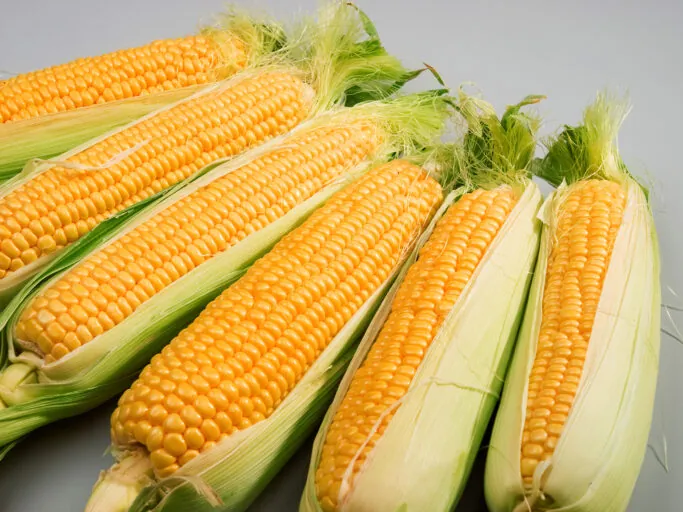
According to the USDA, Illinois and Iowa are the top corn-producing states, and account for a little more than one-third of the U.S. crop. Arizona grows around 0.04% of the U.S. crop.
The earliest known evidence of domesticated corn is 8000 B.C. in Central America, however there is indirect evidence that corn may have even been domesticated as early as 10,000 years ago. According to the Encyclopedia of American Indian Contributions to the World, the Mayans would chew on the sweet corn leaves like we chew gum today.
The name “corn” was once a more generic term that related to whatever grain was prevalent in a certain region. This would mean that in England wheat was, at one time, referred to as corn, and in Ireland and Scotland “corn” would have actually been oats. It was the early American settlers that first referred to “corn on the cob,” or “corn” as we know it now. Today corn is the third most important crop in the world and grows on every continent except for Antarctica.
Around 14,000 lbs. of sweet corn can be grown on only one acre of land, and depending on the cultivator type, the crop could be ready for harvesting within 65-90 days. A corn plant will typically grow to be 7-10 feet tall, though sweet corn plants are usually a few feet shorter. Ears of corn always have an even number of rows of kernels, usually 16. And, that annoying silk on the top – each one is responsible for one kernel of corn on the ear. The average ear of corn contains between 500 and 1000 kernels of corn.
As a traditional summer food, sweet corn is served around the world in many a backyard barbecue, and family gathering. One of the best reasons to enjoy Arizona sweet corn this summer is that not only is it full of flavor, it is also loaded with nutrients! Sweet corn delivers vitamins A and C, potassium, and thiamine. It is packed with antioxidants, full of fiber, and cholesterol free. It is also a whole grain, and who doesn’t need more whole grains in their diet? The USDA recommends the average adult consume about 6 oz. a day of grains, with at least 3 oz. being whole grains.
When buying sweet corn, you should look for ears that are well-formed with tight husks that are light green in color, and golden-brown silks. If the husk is dry, avoid purchase, as this means the stock is old, and out of flavor. You could also buy the fresh-husked corn cobs wrapped in plastic. On these, look for a harvest date, and only buy the most recent, as the kernels will turn sugars to starch and quickly lose their sweet flavor. When you bring it home you should use your corn as early as possible to avoid losing its juicy, sweet flavor. If you plan on storing them, you should do so in the refrigerator, preferably with its husk intact to maintain optimal flavor and moisture. Corn can stay up to 2-3 days when stored at 90% humidity and 32 °F.
Sweet corn can be enjoyed in many ways. You can boil or steam and butter it, or even grill it. Boiled corn kernels are excellent in salads, stews, soups, omelets, fried-rice, etc. Corn chowder is a favorite meal starter in many parts of the world. After boiling the cob you can use the water along with carrots, parsnips, celery-stalks, onion, and so on to make a delicious vegetable stock.
However you choose to make it, one thing is certain, sweet corn is earrisistible!
Related articles
- 18 Fun Facts About Popcorn (fillyourplate.org)
- How Do You Eat Your Corn? (fillyourplate.org)
- An Unusual Place to Find Sweet Corn (fillyourplate.org)
Step Back In Time By Visiting These Local History Museums
Arizona gained its statehood on February 14, 1912. It was the last of the 48 continental states to be admitted into the union.

Arizona was originally a part of Mexico, the land was relinquished to the US in 1848 and became a separate territory in 1863. In 1854 copper was discovered, and copper mining was Arizona’s top industry until the 1950’s. We are widely known for our “five C’s,” copper, climate, citrus, cotton and cattle. In terms of area, Arizona is the 6th largest state in the country.
Though relatively young for a state, Arizona has a fairly fascinating history, and it is worth learning more about it. We have gathered a small list of just some of the museums that are worth visiting to learn more about the diverse and beautiful state in which we live.
53 N. Macdonald
Mesa, AZ 85201
Regular Hours:
Tues – Fri: 10 a.m. – 5 p.m.
Sat: 11 a.m. – 5 p.m.
Sun: 1 – 5 p.m.
This museum will take you far back into the history of the state, all the way back to the time of the dinosaurs! Learn about the first creatures that called Arizona home. In the museums Southwest Gallery you will learn about the first human inhabitants of North America and the Desert Civilizations that later developed. You can see a Hohokam village with pit-houses outfitted with real artifacts as they would have been used 600-1450 A.D. You can explore Territorial Arizona, the Spanish Southwest, and Arizona’s historic 5 Cs in the History Courtyard. Also in the courtyard is a dino-dig and go gold panning! Discover many of the movies that have been filmed in Arizona, and even be in a western movie yourself!
- Heard Museum, Phoenix
2301 North Central Avenue
Phoenix, AZ 85004
Regular Hours:
Monday to Saturday: 9:30 a.m. to 5 p.m.
Sunday: 11 a.m. to 5 p.m.
First Fridays (except March): 6 to 10 p.m.
Established in 1929, the mission of the Heard Museum is to educate visitors and promote greater public understanding of the arts, heritage and life ways of the indigenous peoples of the Americas, with an emphasis on American Indian tribes and other cultures of the Southwest. Explore the museum’s rich history as one of the Phoenix area’s first cultural attractions, and see how the museum has grown to be one of the world’s finest destinations for learning about American Indian arts and cultures.
- Superstition Mountain Museum, Apache Junction
4087 N. Apache Trail
Highway 88
Apache Junction, AZ 85119
Regular Hours:
Open every day except Thanksgiving, Christmas, and New Year’s Day
9:00 a.m. to 4:00 p.m.
The Superstition Mountain Museum collects, preserves and displays the artifacts, history and folklore of the Superstition Mountains, Apache Junction and the surrounding region. This is a 12.5 acre museum site that offers untold photo opportunities with its reproductions of 19th Century businesses including a Wells Fargo office, stage coach stop, barber shop, assay office and other displays of authentic relics of the 1800’s. Occasionally there are gunfighters that will put on a show of what an old west shoot out may have been like. Well marked nature walks crisscross the areas surrounding the museum buildings, all located at the base of the West Wall of the beautiful Superstition Mountain….a one of a kind location. You can also visit the Elvis Memorial Chapel and the Audie Murphy Barn which were moved to the museum, piece by piece, following the second fire which destroyed the Apacheland Movie Ranch.
- Museum at Papago Park, Tempe
1300 N. College Ave.
Tempe, AZ 85281
Regular Hours:
Tues. – Sat.: 10 a.m. – 4 p.m.
Sun.: Noon – 4 p.m.
Closed on Mondays and state holidays.
Concentrating on the twentieth and twenty-first centuries, the museum engages visitors on diverse topics such as World War II’s effects on Arizona, the rise of desert cities, Arizona pop culture and sports, and the state’s geology, among many others. The museum brings stories to life through hands-on and multimedia displays, and a variety of educational programs.
- Pioneer Museum, Flagstaff
2340 N. Fort Valley Road
Flagstaff, AZ 86001
Regular Hours:
Mondays – Saturdays: 9:00 a.m. – 5:00 p.m.
Sundays: Closed except during special events.
The museum is located in the historic Coconino County Hospital for the Indigent. The Hospital was built in 1908 using pumiceous dacite from the Mount Elden Explosive Eruption about 500,000 years ago. The building was used as a hospital until 1938 and was considered a Poor Farm. The exhibits within the museum reflect the history of Flagstaff and northern Arizona. Visitors will learn of the local history of ranching, logging, transportation and life in Pioneer Flagstaff. Festivals and events are also held on the grounds including the annual Wool and Fiber Festival, the Folk Festival and the Heritage Festival.
- Arizona History Museum, Tucson
949 E. 2nd Street
Tucson, AZ 85719
Regular Hours:
Monday & Friday: 9:00 a.m. – 6:00 p.m.
Tuesday – Thursday: 9:00 a.m. – 4:00 p.m.
Saturday & Sunday: 11:00 a.m. – 4:00 p.m.
Closed for State Holidays
The Arizona History Museum’s focus is southern Arizona history from Spanish colonial through territorial eras. Exhibit topics include mining and transportation. The Arizona’s Treasures exhibit features Geronimo’s rifle, 18th-century Spanish silver artifacts, and hands-on exhibits for children.
No. 5 Copper Queen Plaza
Bisbee, Arizona
Regular Hours:
Open Daily: 10:00 am – 4:00 pm
A museum that focuses on the history of Bisbee’s mining community. Bisbee’s storied past is recorded, reflected and retold in this museum like no other; it is one of only 2,000 sites nationwide honored as a National Registered Landmark.
- Old Trails Museum, Winslow
212 Kinsley Avenue
Winslow, Arizona 86047
Regular Hours:
Tuesdays-Saturdays:
10 am-12 noon & 1 pm to 3 pm
(Closed from 12 noon to 1 pm)
Founded in 1997, the Winslow Historical Society receives, preserves, and interprets information and artifacts representing the history and cultures of the Winslow area, in order to engage and enlighten all visitors to the Old Trails Museum’s exhibits and programs. The Old Trails Museum explores Winslow’s history through permanent exhibits on the Atchison, Topeka and Santa Fe Railroad, US Route 66 and Winslow’s historic airport, Pioneer settlement (including the area’s first Mormon settlement), Area ranches & ranchers, and trading posts & traders, Ancient Native American life and pottery and much more.
This list is only a small selection of the museums that offer insight to our state’s history. Arizona is a melting pot of cultures and it is fascinating to see the differences and similarities throughout the different regions of the state. Use the above list to help you get started on your educational journey, you can also choose from this more extensive list of museums from Wikipedia.
Little-Known Facts about Carrots that Will Make You Go “What’s Up Doc?”
Did you know that ancient Romans and Greeks ate carrots, but not the orange varieties we know today? They ate wild varieties of various other colors, such as purple, red, white, and yellow.
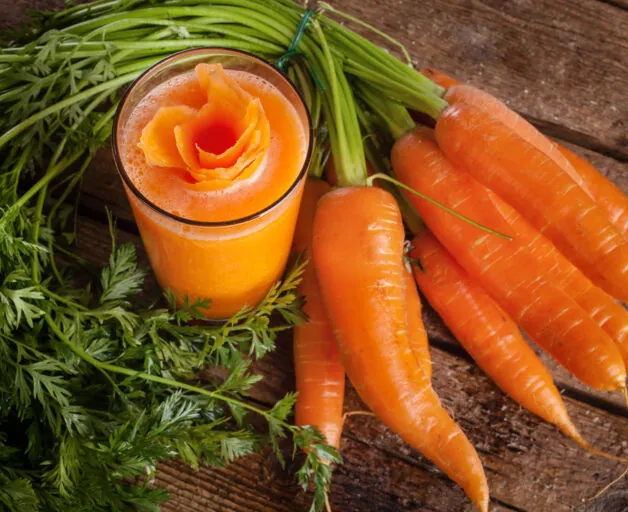
In the 17th century, orange carrots as we know them, first appeared in the Netherlands. Dutch farmers invented the orange carrot in honor of the “House of Orange”, the Dutch Royal Family. The orange color results from beta-carotene, which is a red-orange pigment found in some plants and fruits.
Carrots contain quite the nutritious punch. The most widely known health benefit of carrots is that they contribute to good vision. This is because our bodies turn beta-carotene into vitamin A, which is important for the health of vision (including night vision), and carrots are one of the best sources for beta-carotene. The vitamin A is also important to the health of our bones, skin, and teeth.
Carrots are known to have many medicinal properties. Eating carrots can aid the body in repairing damaged cells. They also can be used as an antiseptic for skin wounds, and very effectively clean your mouth from bacteria.
Other little-known facts about carrots include:
- Just a handful of baby carrots or one medium carrot counts as one serving of your daily veggies.
- Carrots are a good source of fiber, which means they are good for the digestive system.
- Vitamin C, potassium, folate, and vitamin B6 are also found in carrots, as well as several minerals like magnesium and calcium.
- The purple pigments of the purple carrots are called anthocyanins. Anthocyanins act as anti-oxidants that protect the body.
- Including carrots in your diet when breast feeding helps to improve breast milk production.
- A carrot is 87% water, so consuming them can help you to be sure your body is getting an adequate amount of H2O.
- Out of all vegetables, it’s no surprise that carrots have the largest content of vitamin A (beta carotene). 100 grams of carrot will give you 104% of the recommended daily dose.
- 30% of American Vitamin A intake comes from carrots.
- One glass of milk contains the same amount of calcium as in 9 carrots.
- One carrot gives you the energy to walk one mile!
As you can see it is very beneficial to make sure carrots are a part of our diets. However, it is true that eating massive amounts of carrots can sometimes cause a person’s skin to turn yellowish orange. This is a condition called carotenemia and is most noticeable on the soles of your feet or the palms of your hands. It requires an extremely high amount of carrot consumption to get carotenemia, so it is not very common, and it is completely reversible by just reducing carrot intake.
Carrots can be eaten in various different ways. You can eat them raw, they are delicious dipped in hummus or ranch. Carrots are often boiled, baked, fried, grated, juiced, mashed, pulped, pureed, and steamed. Carrots are also often used in stir-fries and salads. They can also be dehydrated to make chips, powder, and flakes. Even the carrots greens are edible, but consumption is rare.
In western countries, the natural sweetness and sugars of carrots allow them to be used in decadent desserts like carrot cake. Portugal is known to use carrots in jam, and in India they are used in many deserts. Around the world carrot juice is widely consumed, especially as a health drink, with or without other fruits and vegetables. You can try them in one of the several recipes that we have collected here on FillYourPlate.org.
In 2004, carrots were ranked as the seventh most valuable crop grown in the United States. California is our top fresh carrot producer, and Washington is the top grower of carrots meant for canning and processing. However, Arizona carrot production is nothing to sneeze at. The Rousseau Family Farms is our largest carrot farmer producing on average 42,000,000 pounds of carrots each year which are then sold to grocers all over the United States (including Arizona). The average American eats around 10.6 lbs. of fresh carrots a year, so the carrots grown at Rousseau Family Farms alone can feed around 3,962,264 people in a year!
There really are quite a bit of carrot facts. Here are some more!
- Mel Blanc (the voice of Bugs Bunny) was allergic to carrots!
- Baby carrots aren’t actually babies. A baby carrot comes from a large carrot that was rolled over blades and thrown around in a metal cage to be rubbed down into a round-ended, short baby carrot.
- Out of all of the vegetables, only the beet contains more natural sugars than carrots.
- One teaspoon can hold 2000 carrot seeds.
- In 17th century England, carrot leaves were often carried in the hair as a fashion statement.
- Carrots were first introduced to America in 1607 with the first settlers who landed in Jamestown, however they did not become a very popular food until soldiers returned from WWI after having constant contact with them.
- Wild rabbits don’t eat wild carrots.
- The heaviest carrot recorded weighed 18.985 lbs.
- The longest carrot recorded was nearly 17 feet long.
Rousseau Family Farms, though our largest carrot producer, is not the only place you can go to enjoy locally grown carrots. When you visit Fill Your Plate, you can click on “Find a Farm Product” and type in carrots, and a list of local growers will pop up. You can then choose a grower closest to you. You can also buy fresh Arizona-grown carrots from Rousseau Family Farms, most likely, at your local grocery store.
Related articles
- Fun Facts About Zucchini (fillyourplate.org)
- A Simple Guide to Start Eating Healthier (fillyourplate.org)
- Fun Facts about Clementines (fillyourplate.org)
A Simple Guide to Start Eating Healthier
The average person will eat nearly 60,000 lbs. of food during their lifetime. That is the weight of about 6 elephants! It is important to make sure that the majority of that 60,000 lbs. are healthy foods.
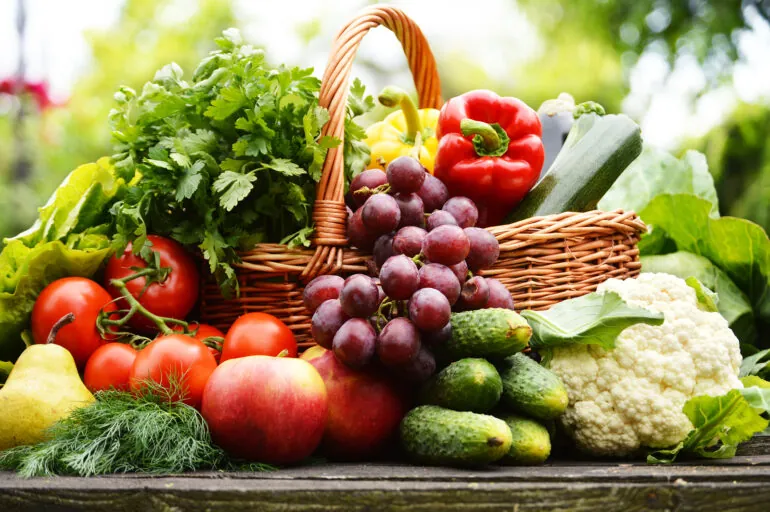
The modern world is fast-paced and many people find themselves relying on fast food and quick-to-fix processed foods so they don’t need to slow down. The problem with those meals is that they are higher in calorie counts and low in nutrition. Our bodies are starving for nutrients that our diets are seriously lacking. When our diets lack the appropriate nutrients, even when the food we eat are ridiculously high in calories, our bodies will tell us, “I’m still hungry!” So you stay hungry, causing you to eat even more of the unhealthy foods. When you begin to add ingredients with the right amount of nutrients that your body needs your body will perform at super hero levels!
Not only will eating fresh foods be beneficial to your health, but it could save you money too. Convenience foods like frozen dinners, fresh pre-cut vegetables, and instant rice, oatmeal, or grits can cost you more than if you were to make them from scratch. Take the time to prepare your own — and save!
The USDA has a website that can help you make sure you are getting the right amount of the right kinds of nutrients that your body needs, http://www.choosemyplate.gov/ . Choose My Plate has guidelines on exactly how much of each food group you should be consuming based on age, weight, sex, and even physical activity. It is an excellent resource to start your healthy foods journey. Here are a few tips on achieving a healthier plate:
- At least half of your grains should be whole grains.
Eating whole grains as a part of your diet can reduce the risk of some chronic diseases. Grain products are any food made from cornmeal, oats, barley, rice, wheat, or other cereal grains. Examples of this would be tortillas, grits, oatmeal, bread, pasta, and breakfast cereal.
There are two subgroups of grains, whole grains and refined grains. A whole grain will contain an entire grain kernel – the bran, germ, and endosperm. A couple of simple ways to substitute the refined grains in your diet for whole grains would be to eat brown rice instead of white rice, or to eat 100% whole wheat bread and bagels in place of white bread. You can also add more whole grains to your diet by mixing them in with your dishes. Add barley to your vegetable soup, or try a quinoa salad or pilaf. The average person should consume between 5 and 8 ounces of grains daily.
- Eat more veggies.
Vegetables are an important part to your diet as they provide essential nutrients and minerals and most are low in calories. The latest dietary guidelines call for an average of five to 13 servings of fruits and vegetables a day (2½ to 6½ cups per day). You can divide that between the two however you would like.
Adding more vegetables to your diet is easy! One way to be sure to add them in would be to chop them up as soon as you are home from the grocery, market, or in from the garden so they are easily accessible as a quick snack (carrots, celery, and peppers are great with humus.), or add on to your salad. Eating vegetables doesn’t mean you are limited to salads. Cook them into stews and soups such as Cream of Cauliflower or Minestrone. You can steam them, bake them and roast them. Lettuce wraps and cauliflower cooked like Buffalo wings are also fun way to make sure you are getting enough.
- Eat more fruits.
Most fruits are naturally low in sodium, calories, and fat, and none contain cholesterol. They contain nutrients such as dietary fiber, folate (folic acid), potassium and vitamin C. Keeping a bowl of fruit on the counter or table is a good way to remind yourself to eat more fruits. Buying fruits when they are in season means they will be at their peak flavor and may make them more affordable. Add fresh fruit to your yogurt and cereal. You can also add more fruit to your diet by eating them dried. They make a great snack and are easy to store. In the spring and summer months, fruit salads are incredibly refreshing.
- Variety is key with protein.
Protein can come from both animal (beef, poultry, seafood, eggs) and plant (soy, nut, seeds, and beans) sources. Most people ages 5 and over should eat 5-7 ounces of protein daily. Your meat and poultry are best lean. Trim and drain fat from beef and pork, and remove skin from poultry. Replace meat and poultry with seafood once or twice a week- make selections low in mercury such as trout, herring and salmon.
Have an egg! Enjoying one egg a day will not increase your risk for heart disease so adding them to your weekly routine is fine! Only the yolk contains saturated fat and cholesterol, so feel free to eat as many egg whites as you would like. Try and eat more plant proteins more often. They are high in fiber and naturally low in saturated fat. Kidney beans, white beans, tofu, tempeh, hummus, pecans, pistachios, and sunflower seeds are excellent choices. Also you should try to grill, broil, bake or roast your meats and poultry as those methods do not add any extra fat. Avoid breading as this adds unnecessary calories.
- Don’t forget your calcium.
You can get calcium from the dairy food group. This includes foods such as milk, fortified soymilk, cheese, and yogurt. An average of 3 cups of dairy are recommended per day for any one ages 8 and up. Ages 2-8 should consume an average of 2 cups per day. You should choose low-fat or fat-free varieties to reduce calories and saturated fat. Drinking fat-free (skim) milk or 1% instead of whole will cut calories but not reduce calcium and other nutrient intake. You could also substitute plain yogurt in recipes, such as dips, that call for sour cream. Ricotta cheese is a great substitute for cream cheese, and fat-free evaporated milk can be used instead of cream. To get the most calcium out of your dairy, choose fat-free or low-fat milk or yogurt more frequently than cheese. Milk and yogurt also contain less sodium and more potassium than cheeses, and they are also chock full of vitamin D.
You can easily find Arizona grown fruits and vegetables and nutritious animal proteins like beef, pork, lamb and eggs by shopping at your favorite Arizona grocery store or farmers market.
Related articles
- Little Known Facts about Arizona’s Leafy Greens (fillyourplate.org)
- 8 Ways to Eat Healthy, Arizona Style (fillyourplate.org)
- Fun Facts about Salad (fillyourplate.org)
Arizona Oranges, Reaping the Sunshine
In Arizona, where residents can enjoy 193 days of sunshine annually – or almost 50 more than the nearest competitor, California – sun-ripened oranges are a prime crop!
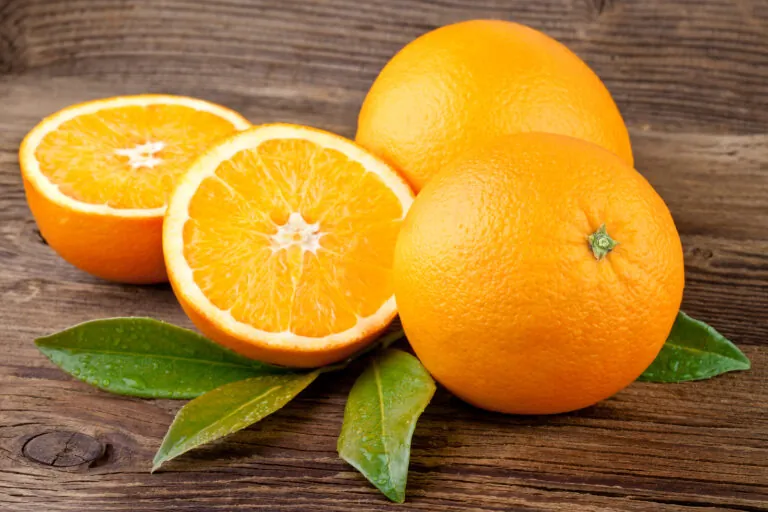
The best area for oranges in Arizona is the desert southwest. In this terrain, part of the Sonoran Desert, the all-season warmth and sunlight of Yuma, Mohave, Maricopa, and Pinal counties produce commercial oranges and other citrus of such sweetness and flavor that the area is getting a reputation as a serious contender to California.
Yuma County, in particular, offers an ideal climate for oranges. According to United States weather statistics, Yuma, Arizona tops the list of locations in the U.S. with the most sun. Those lucky enough to live there can rely on the fact that each day will deliver at least 90 percent of potential sunlight. In fact, with an average of 4,300 sunny hours annually, Yuma holds the world’s record for the greatest amount of sunshine per year!
Clouds, when they do occur, come in July, August, and September – the ideal months to temper summer highs. Even in December, the sun still puts in an appearance more than 8 out of 10 daylight hours.
This is the kind of climate oranges love! No wonder Yuma County is now the largest citrus growing region in the state, adding to the state’s reputation as the fourth largest producer of oranges (and grapefruit) in the nation. Arizona is also one of only two states to grow 95 percent of America’s lemons! (California is the other).
The first citrus were brought to Arizona in the wake of the Hohokam Canals/Salt River Project. In 1889, William Murphy planted an experimental citrus grove. The fruits commanded premium prices from the Civil War soldiers and California Gold Rush miners who remained in the area. At that time, ascorbic acid – the major component of citrus fruits – was the only known preventative for scurvy, a weakening disease that caused tooth loss and bleeding from the skin.
Not only are Arizona oranges delicious, but they:
- Are grown on trees called “evergreen”; trees that don’t lose their leaves in winter
- Can be left on the tree and won’t over-ripen
- Will not continue to ripen once picked, which is why nothing tastes as good as an orange picked and delivered locally
- Originated in the Orient, namely southern China and northern India, and migrated to the U.S. via Spain to South America, and Mexico, in the early 1700s
- Are said to help dissolve kidney stones and promote a healthy liver
- Deliver a flavor that is the world’s third favorite, after chocolate and vanilla
- Are not grown from seeds, but from bud grafts on 12 types of rootstocks selected for local conditions
- Are hybrids crossbred from a Pomelo and a Mandarin orange, and now come in more than 600 varieties around the world
- Produce 10 segments inside each fruit, and sweet-smelling blossoms that are a major component of many perfumes
- Have a pungent peel that can be used in the garden to deter slugs and some other pests
- Are good at fighting against skin damage caused by sun and pollution, can help lower cholesterol thanks to their fiber content, and provide both potassium and choline to maintain healthy hearts
For all their benefits, 85 percent of oranges still end up in orange juice, or OJ. This juice is not always 100 percent OJ, or freshly squeezed, no matter what the label says. Commercially manufactured OJ can be so highly processed that makers add orange flavoring to restore the taste consumers have come to expect.
The next time you reach for that waxed container of “fresh” OJ, think instead of buying a dozen oranges and squeezing your own. You will be doing yourself, and your family, a big favor. If you don’t protect the hearts of those you love, who will?
Related articles
- In Time for National Oranges and Lemons Day (fillyourplate.org)
- 30 Ways to Use Oranges (fillyourplate.org)
- 15 Fun Facts about Food (fillyourplate.org)


